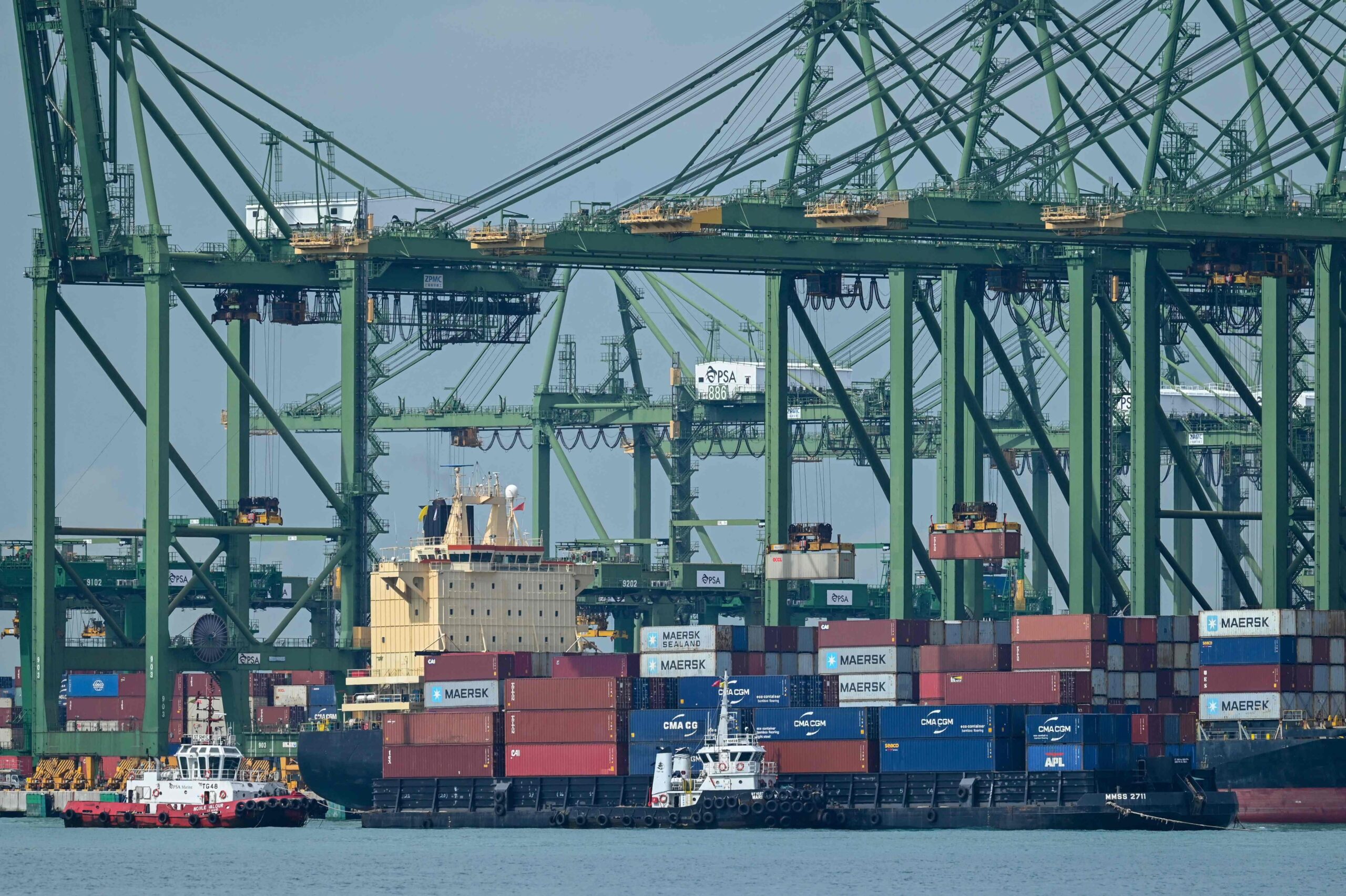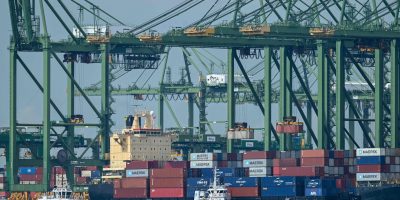SINGAPORE’S non-oil domestic exports (NODX) grew more than expected in December, but economists noted that this reflects front-loading ahead of expected tariffs from incoming US president Donald Trump.
In December, NODX grew 9 per cent year on year, as both electronics and non-electronics shipments rose, data from Enterprise Singapore (EnterpriseSG) showed on Friday (Jan 17).
This extended November’s 3.4 per cent rise and beat the 7.8 per cent rate expected by private-sector economists in a Bloomberg poll.
But with Trump having threatened to impose tariffs on key US trading partners – not least China – upon taking office on Jan 20, exporters may have brought forward their shipments to avoid this, observed economists.
Maybank economists Chua Hak Bin and Brian Lee said: “Front-loading of shipments in anticipation of Trump 2.0 tariffs has been evident in the strong NODX outturns for November and December, particularly for electronics shipments to China, Hong Kong and Malaysia.”
They expect such front-loading, as well as the shifting of supply chains to South-east Asia, to continue driving manufacturing and export growth in early 2025.
BT in your inbox

Start and end each day with the latest news stories and analyses delivered straight to your inbox.
DBS economist Chua Han Teng also expects that with more near-term front-loading, Singapore’s positive NODX performance is likely to continue into early 2025.
Better performance
On a seasonally adjusted monthly basis, NODX expanded 1.7 per cent in December to S$15.8 billion, extending the previous month’s 14.7 per cent growth.
Taking into account the latest figures, full-year NODX growth for 2024 was 0.2 per cent year on year, said DBS’ Chua. This was a “significant” improvement from the 13.1 per cent contraction in 2023, but fell short of EnterpriseSG’s full-year forecast of “around 1 per cent”.
Shipments of electronics products grew 18.6 per cent on the year, extending November’s 23.1 per cent surge. The expansion was mostly led by integrated circuits (23.4 per cent), PCs (83.6 per cent), and disk media products (44 per cent).
Non-electronic shipments expanded 6.6 per cent, reversing November’s 1.6 per cent decline. Contributing most to this growth were non-monetary gold (67.6 per cent), food preparations (61.5 per cent) and specialised machinery (19.9 per cent).
Beyond front-loading
Compared to 2024’s marginal growth, full-year performance is expected to be better in 2025, even as NODX growth slows in the latter half of the year.
Apart from the front-loading effect, NODX growth in 2025 should be supported by “resilient” near-term external demand for electronics amid the global tech upcycle, said DBS’ Chua.
OCBC chief economist Selena Ling expects NODX growth to accelerate to around “2 to 4 per cent” in 2025, considering 2024’s “relatively low base” and Singapore’s free trade agreement (FTA) with the US. “The key uncertainty is the timing and magnitude of fresh Trump tariffs… and how much this may impact China and Asean GDP (gross domestic product) and trade growth prospects,” she said.
UOB associate economist Jester Koh’s 1.5 per cent forecast for full-year NODX growth in 2025 already takes into account a slowdown in exports momentum in the second half, due to the impact of Trump’s tariffs.
The Maybank economists have a higher full-year NODX forecast of 3 per cent – but they noted that this represents a slowdown from the 5.7 per cent growth rate in H2 2024.
While Singapore’s FTA and bilateral trade deficit with the US make it “a less likely Trump target”, the Republic will still be affected “as global trade is hit by increased protectionism”, they said.
In December, NODX to eight of Singapore’s top 10 key markets grew, with EU-27 and China being the exceptions.
Shipments to Taiwan recorded the largest increase at 50.8 per cent year on year, up from 42.7 per cent previously.
This was followed by exports to the US, which grew 30.7 per cent, reversing the previous month’s 19.4 per cent contraction. Exports to Malaysia rose 24.2 per cent, slowing marginally from 24.4 per cent before.
In contrast, exports to the EU-27 and China fell 26 per cent and 12.7 per cent year on year, respectively.
“What is interesting is that domestic demand conditions in China likely remained lacklustre,” said OCBC’s Ling.
This is reflected in the sustained contraction of 19.6 per cent in non-electronics exports to China in December, despite electronics exports rising 33.8 per cent.
Overall, total trade rose by 19 per cent year on year in December, extending November’s 4.9 per cent expansion. On a seasonally adjusted basis, total trade rose 5.4 per cent, continuing the previous month’s 8.9 per cent growth.












